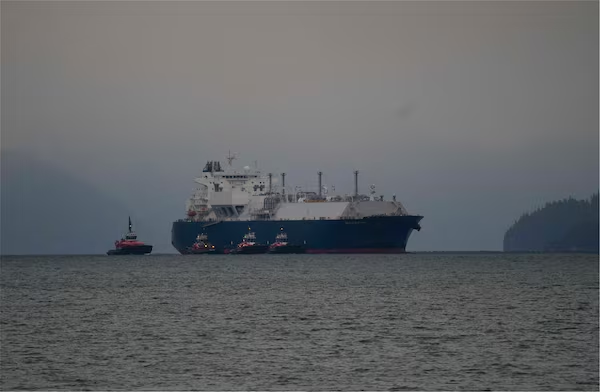On Monday, the tanker GasLog Glasgow eased away from the new LNG Canada terminal in Kitimat, British Columbia, carrying the nation’s inaugural cargo of liquefied natural gas. This moment caps off nearly 15 years of planning delays and false starts and heralds Canada’s entry into the global LNG export market reuters.com. The facility, a joint venture led by Shell with partners Petronas, PetroChina, Mitsubishi and Korea Gas Corporation, represents the largest private investment in Canadian history at around CAD 40 billion.
Project Launch and Shipping Details
LNG Canada began producing gas for export just days before the departure, with Train 1 at the Kitimat plant reaching its first production milestone on June 22 after extensive commissioning work reuters.com. The terminal’s two processing units together can handle 14 million tonnes of LNG per year, enough to heat millions of homes in Asia. By skipping the Panama Canal, the Pacific Coast location shaves days off the journey to key buyers in Japan, South Korea and China, giving Canada a logistical edge over Gulf Coast exporters reuters.com.
Market Context and Expansion Plans
Shell forecasts that global LNG demand will grow by about 60 percent by 2040, driven in large part by Asia’s growing energy needs. With North American gas markets maturing, Canada aims to diversify its exports beyond the United States, which currently absorbs nearly all its natural gas output. The project’s backers are already weighing a Phase 2 expansion that could double capacity to 28 million tonnes per year, depending on how the initial shipments perform and how Canada’s policy landscape evolves reuters.com.
Industry Impact and Challenges
Canada’s entry into LNG exports could reshape the domestic energy sector and boost jobs, especially in British Columbia’s northwest. At peak construction, the project employed up to 9,000 workers and awarded billions in contracts to local businesses and Indigenous groups revelstokereview.com. Yet challenges remain: higher costs for remote-site construction, tighter environmental rules than in some competing regions, and market volatility in energy prices could all affect long‑term returns. Some analysts caution that Canada may never rival leading exporters in scale, though even modest market share gains would strengthen trade diversification.
Personal Insights and Analysis
Moving forward, Canada must balance the economic upside of LNG exports with its climate commitments. While cleaner than coal, natural gas remains a fossil fuel; policymakers should couple new export revenues with investments in renewables and carbon‑capture technology. For Canadians, this shipment is both a triumph of engineering and a reminder that energy transitions are complex. As a reader, you can see that progress often comes in fits and starts, and that real change demands patience, planning and constant re‑evaluation.

